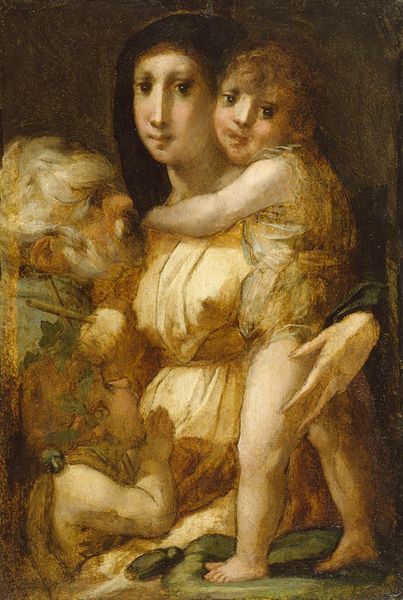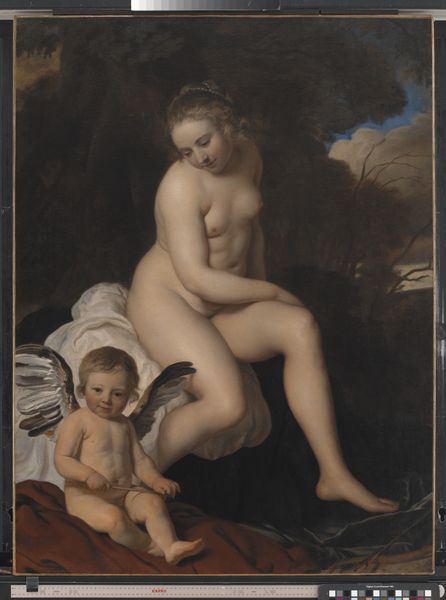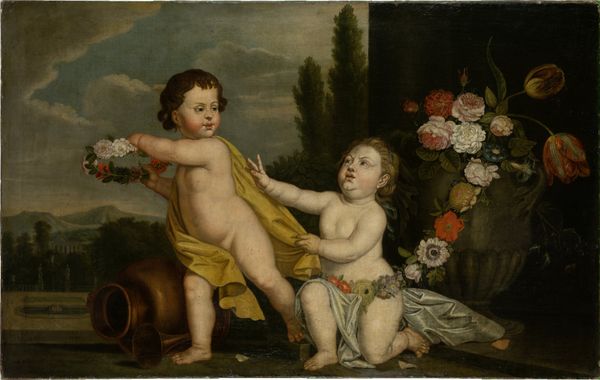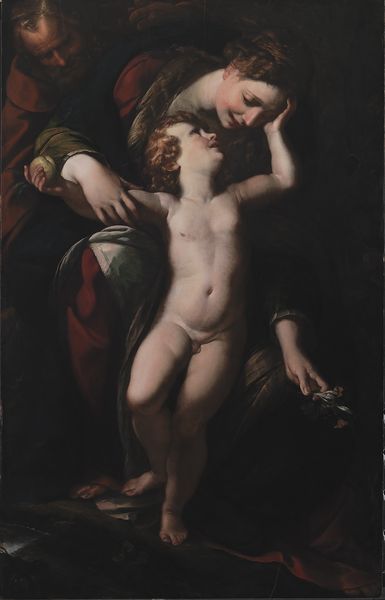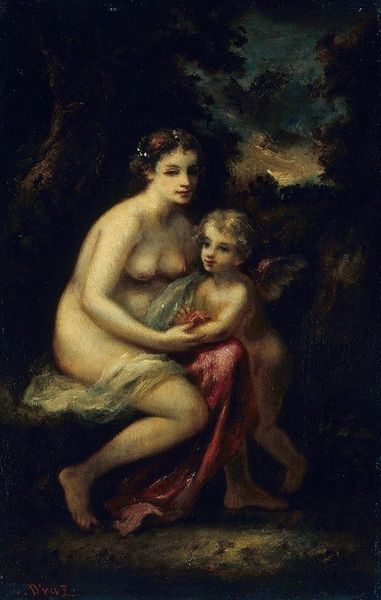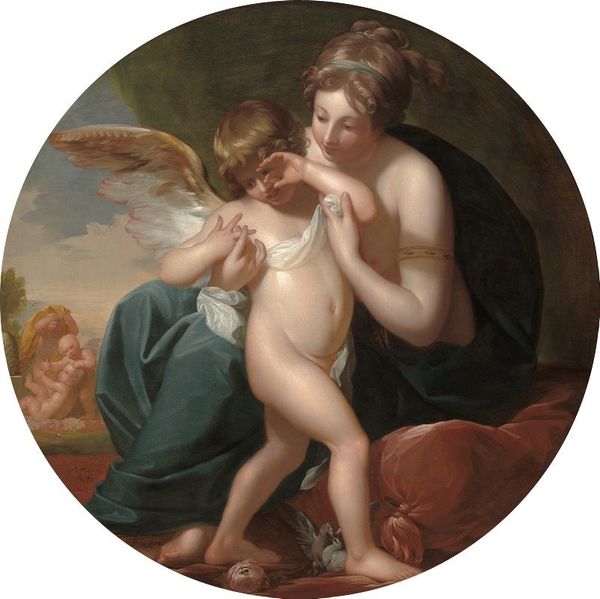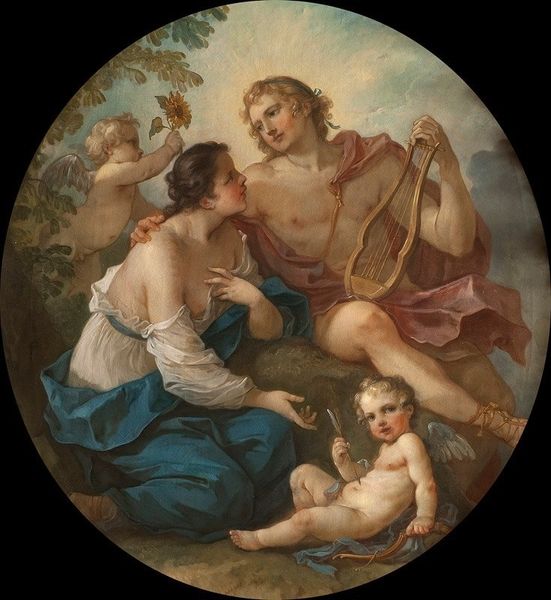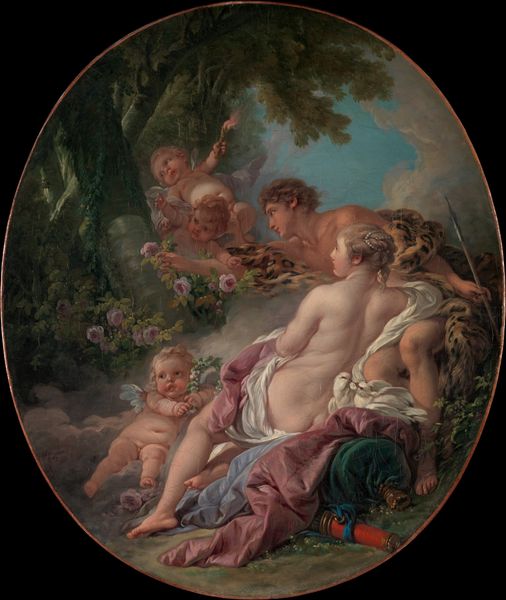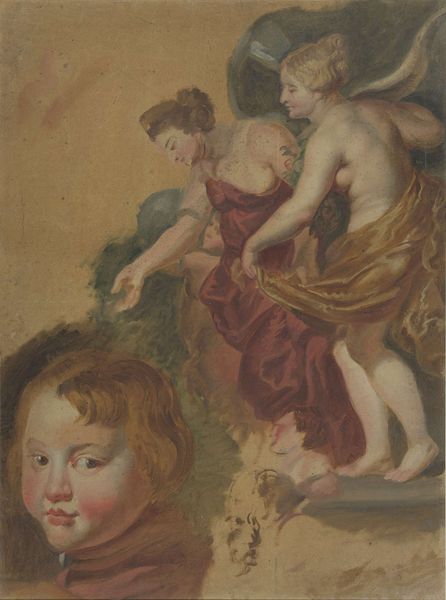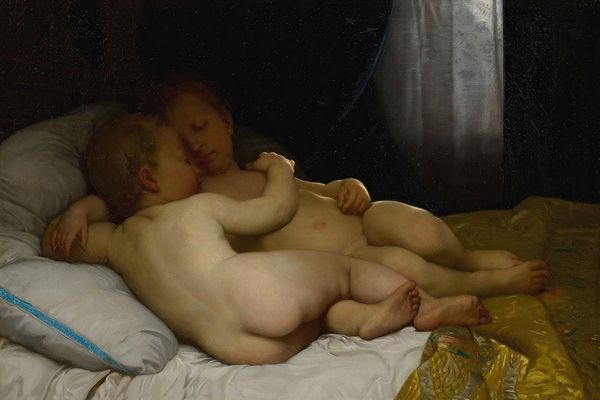
Two Infants, Personifications of Spring and Autumn c. 1650 - 1670
0:00
0:00
thomaswilleboirtsbosschaert
Rijksmuseum
painting, oil-paint
#
allegory
#
baroque
#
painting
#
oil-paint
#
figuration
#
group-portraits
#
flemish
#
genre-painting
Dimensions: support height 45.7 cm, support width 38.3 cm, support thickness 2.8 cm, frame height 54.6 cm, frame width 47.6 cm, frame depth 9.8 cm
Copyright: Rijks Museum: Open Domain
Thomas Willeboirts Bosschaert painted these two infants, personifying Spring and Autumn, in oil on panel. This was likely made in Antwerp in the mid-17th century, a time when the Southern Netherlands was recovering from the religious wars of the previous century, with the Catholic Church reasserting itself as a major patron of the arts. The image creates meaning through the classical allegories of the seasons, represented by chubby infants with symbolic attributes. The child on the left wears a garland of flowers, a visual code for springtime. The child on the right holds wheat stalks and a lemon. This evokes autumn, the time of harvest. Bosschaert would have learned to use these visual codes in his training as an artist. As art historians, our job is to decode these images by tracing their institutional and cultural histories. Looking closely at Bosschaert’s biography and the archives of the Antwerp Guild of Saint Luke, where he trained, can tell us more about the artistic conventions he learned and the social context in which he was working.
Comments
No comments
Be the first to comment and join the conversation on the ultimate creative platform.

